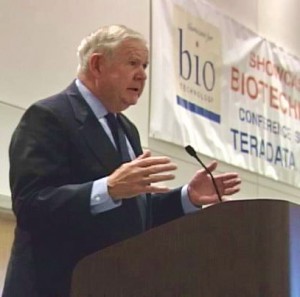As the pulse is still an indicator of health in human beings and other animals, health care-related inflationary indices can be a measure of economic health, growth, and change in our business. After perusing nearly six pages of single-spaced inflationary projections in an Amerinet–produced report, two jumped out at me, the two highest. One was more significant than the other, but both tell their own story.
The first was coffee/juice, and the projected costs for these two items are up 10 percent. At first my curiosity was piqued by this, but then I saw the explanation further over on the page. It said that these increases were based on the recent freezes in Florida, which will have a significant impact on juice pricing. I guess that makes sense. The trees and oranges froze and were ruined, but it was interesting to me that every other orange-growing country in the world hadn’t jumped into the market and taken advantage of this shortage situation.
The even more difficult quandary created by this coffee/juice category, however, was that the coffee wasn’t explained. Surely, everyone knows by looking at a world map in Starbucks that coffee comes from places that are not Florida. Maybe it’s just a “calf path” item. You know, some ancient, primeval calf made a trail in the woods named “coffee/juice” and we still follow that path today.
I’m sure that many of you are now wondering what the second category is, the second highest predicted commodity increase for health care, and, honestly, I can’t wait to tell you. Why am I excited about this one? It’s because, you see, it is a NIGYSOG (Now I’ve Got You, You Son of a Gun) moment. For nearly five years, I’ve been predicting some very obvious changes that are about to sweep through the healthcare delivery system. Our blogs, newspaper columns, and speeches have all directed you toward these changes, and over and over, the vast majority of healthcare management professionals have either ignored or rejected these pronouncements; sometimes out of fear and sometimes out of a “wake me when it gets here” mindset. Honestly, when it comes to prognosticating, it made me feel like Punxsutawney Phil. (Oh, and what was that advertisement I read today? “You have just survived the worst snow storm in this area in the past 100 years.”)
The second most highly inflationary bell ringer from the Amerinet report is one that spot-on supports our predictions completely. (Drum roll, please.) It is biotech products. The prediction is that the cost of biotech products will increase an average of about nine percent. Upon examining the comment section beside this category, the following sentence appears: “Increased demand will drive these price increases.”
Many of you may still be scratching your collective heads in wonderment. “What are ‘biotech products,’ and why should I care about them?,” you may be asking. Let’s take a quick historic look at life in the biotech lane. In 2001, when we co-founded a research institute that had specialty areas in biomedical informatics, tissue banking, proteomics, and genomics, it cost approximately $100,000,000 (that’s 100 million) to map ONE human genome. This year, that number will fall to below $500. If you take that ratio of product-to-cost and project it forward, it doesn’t take too much imagination to conclude that not so many years or months from now, your physician will potentially have (or want to have) access to your molecular profile. It will provide insights into your personal health that were heretofore unavailable, even unimaginable.
Once issues involving insurance coverage, confidentiality, and ethics are resolved satisfactorily, these tests will become a routine part of your annual physical. Complete Blood Counts, lipid profiles, prostate or breast testing, and genomic and proteomic analysis will provide your caregiver with answers that make the practice of medicine until now seem hit-or-miss by comparison.








